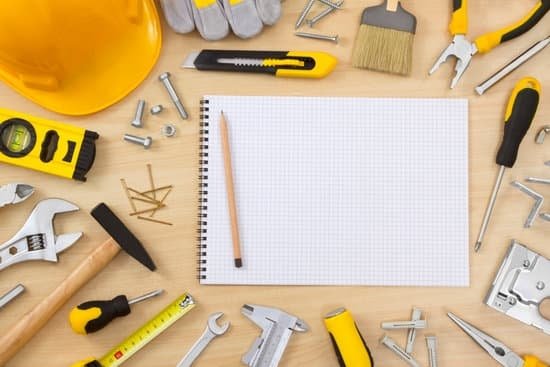Introduction to Woodworking Sanding Blocks
A woodworking sanding block is a tool that is used to help with smooth surfaces on wood. This can be done by applying an abrasive material to the wood, sanding it down until it is smooth and even. Sanding blocks come in various sizes and shapes, allowing you to work around corners or curved surfaces. It also provides good balance while providing enough force to effectively reduce the grain of the wood.
Uses: Woodworking sanding blocks are primarily used for smoothing out and leveling off wooden surfaces, such as doors, shelves or furniture pieces. They can also be used to remove knots or defects in the surface or make them less noticeable.
Advantages: The main advantage of using a sanding block is that it allows a more precise job than using sandpaper alone as there is less chance of accidentally removing too much of the plank’s surface area. This type of tool also helps prevent fatigue from working with heavy surfaces as most are lightweight and easy to maneuver. It also allows you better control over how much of the grains is removed with each pass, which can provide for smoother results overall.
Disadvantages: The main disadvantage to this type of tool is that it can prove difficult for some people to get into tight places or when dealing with intricate details on large surfaces due to its shape and size. Another potential issue would be that if not managed properly, a sanding block could leave scratches behind in some parts which may not easily be seen until after varnishing or painting has been applied.
Different Types of Sanding Blocks
Handheld sanding blocks are the most common type of sanding block. They usually consist of a flat base with an abrasive surface, such as sandpaper, attached to it. Handheld block sanders come in different shapes and sizes and can be used in a variety of applications, from edges to curves and angles.
Friction sanders are designed for heavier duty jobs, such as removing paint or smoothing out rough surfaces. They typically feature a metal base and rubber pad combination which allows for excellent control when using heavier pressure. This type of sander can also be used with higher levels of grain sizes making them ideal for large projects that require a more powerful action.
Pneumatic sanding blocks are powered by air compressors and provide much higher levels of speed than handheld versions do. They are typically made from harder materials such as plastic or steel, which allows them to hold up better under heavier use. Likewise, their air-power provides faster removal rates which is great when tackling tough projects that would otherwise take too much time when using manual handheld options.
How to Choose the Right Sanding Block
Type: Different sanding blocks are designed to work with different types of sandpaper. Some will be better suited to coarser sandpapers, while others are made for use with finer grades. You’ll need to consider what type of sandpaper you’ll primarily be using with the block in order to make sure you get the right one for your project.
Size: As far as size goes, the bigger the larger surface area is covered by the block, so keep in mind how much material you need to work on at once. As well, make sure that the block is comfortable enough for you to handle and wield around without strain.
Performance: The performance of a sanding block depends heavily on its construction ” for example, some have rigid frames which allows them to better hold their form and also makes pressuring onto certain sections easier. Other features such as grip strength and ergonomic design should also be taken into account when looking for a good performing block that fits your needs.
Demonstrating the Process of Sanding With Sanding Blocks
Step 1: Prep
Before you begin, make sure that the wood surface is clean, dry and smooth. To do this, wipe away any dust or dirt with a damp cloth. You may also want to lightly sand the surface before taking out your sanding block.
Step 2: Choose the Right Paper
Begin by choosing the grit of sandpaper that works best for your project. For basic projects, an 80-grit paper will get the job done but for detailed tasks you may need higher or lower grits. Different materials require different types of paper as well – softer woods should be handled with fine-grit papers and harder materials with medium or coarse grades.
Step 3: Secure Your Block
Your sanding block should have a rough side perfect for griping the sandpaper – if not, attach some strong adhesive to one side before beginning. Make sure it’s firmly adhered so that there are no snags when you move it on the wood.
Step 4: Start Sanding
Once everything is in place and secure, take your time moving the block in a straight line across the wood at a slow pace until you finish each area. Pay attention to progress areas and make sure to apply equal pressure on all sides of the block so that grooves don’t form on one part of the woodgrain more than another area. Additionally, focus on sections near splinters so that they don’t create sharp edges when working over them with your block.
Step 5: Review Your Work
When finished, review your work from various angles and points around the project prior to applying stain or paint as this is when mistakes can easily be missed! Once assured of satisfaction – enjoy your beautiful craftsmanship!
Safety Considerations When Using Sanding Blocks
Using a sanding block is an excellent way to achieve professional-looking results, but it is important to take safety precautions before doing so. Eye and ear protection, such as protective goggles and wearing earplugs, are strongly recommended when sanding. Also, make sure you know and understand the Occupational Safety and Health Administration (OSHA) Standards that apply to your workspace, as these standards set limits on the amount of air contamination allowable in work environments. When using a sanding block you should also avoid long periods of continuous use in order minimize fatigue and reduce the chances of making errors or mistakes. Finally, it is important to never run your tool near any dust or flammable materials that could cause a fire hazard. Be alert and prepared while operating the tool at all times.
Tips to Extend the Lifespan of Sanding Blocks
To keep your sanding blocks in top condition and extend their lifetime, it’s important to take proper care of them. Here are some tips to help ensure your sanding blocks will last for years:
1. Clean after each use – After you have finished sanding the project, properly clean off all the dust particles from the sanding block to prevent clogging.
2. Store safely – Keeping your sanding block out of direct sunlight can reduce the chance of premature wear and tear due to extreme temperatures. Additionally, make sure that you store it away from moisture to avoid any build up of moisture on the surface which can lead to rust or corrosion.
3. Check for signs of wear – Regularly inspect the grit on the block by rubbing your thumb over it or using a magnifying glass to determine if it still has abrasive material on it; if it’s worn out, replace with a new one.
4. Proper storage conditions – To protect against any kind of damage in storage, make sure that there are no sharp objects inside your container where the sanding block is stored. Store in an area that is away from extreme temperatures and humidity levels to ensure that its longevity isn’t compromised when not in use.
Final Thoughts
One of the biggest benefits to using a sanding block on your woodworking projects is that it makes the process more efficient and less messy. A sanding block can be quickly and easily adjusted to suit the shape, size, and material used for any given project. This allows you to work more efficiently by allowing sharp edges or hard-to-reach areas to be reached quickly and effectively. Additionally, when you use a sanding block, there is less dust and debris collected in comparison to regular electric tools, reducing the level of mess created during your projects. Finally, using a sanding block also helps reduce fatigue due to its weight and ergonomic design; as it provides good hand support while also distributing pressure evenly over a larger surface area than with most other tools.
In conclusion, using a sanding block while working on woodworking projects is an excellent way to make your workflow more efficient while also reducing mess by decreasing the amount of dust that accumulates. Furthermore, it reduces fatigue through providing better hand support and easier movement. Utilizing these benefits can greatly increase speed and quality of your projects moving forward!

Hi everyone! I’m a woodworker and blogger, and this is my woodworking blog. In my blog, I share tips and tricks for woodworkers of all skill levels, as well as project ideas that you can try yourself.





